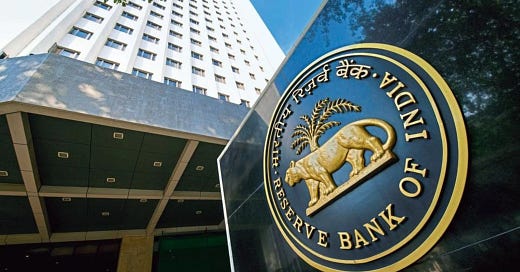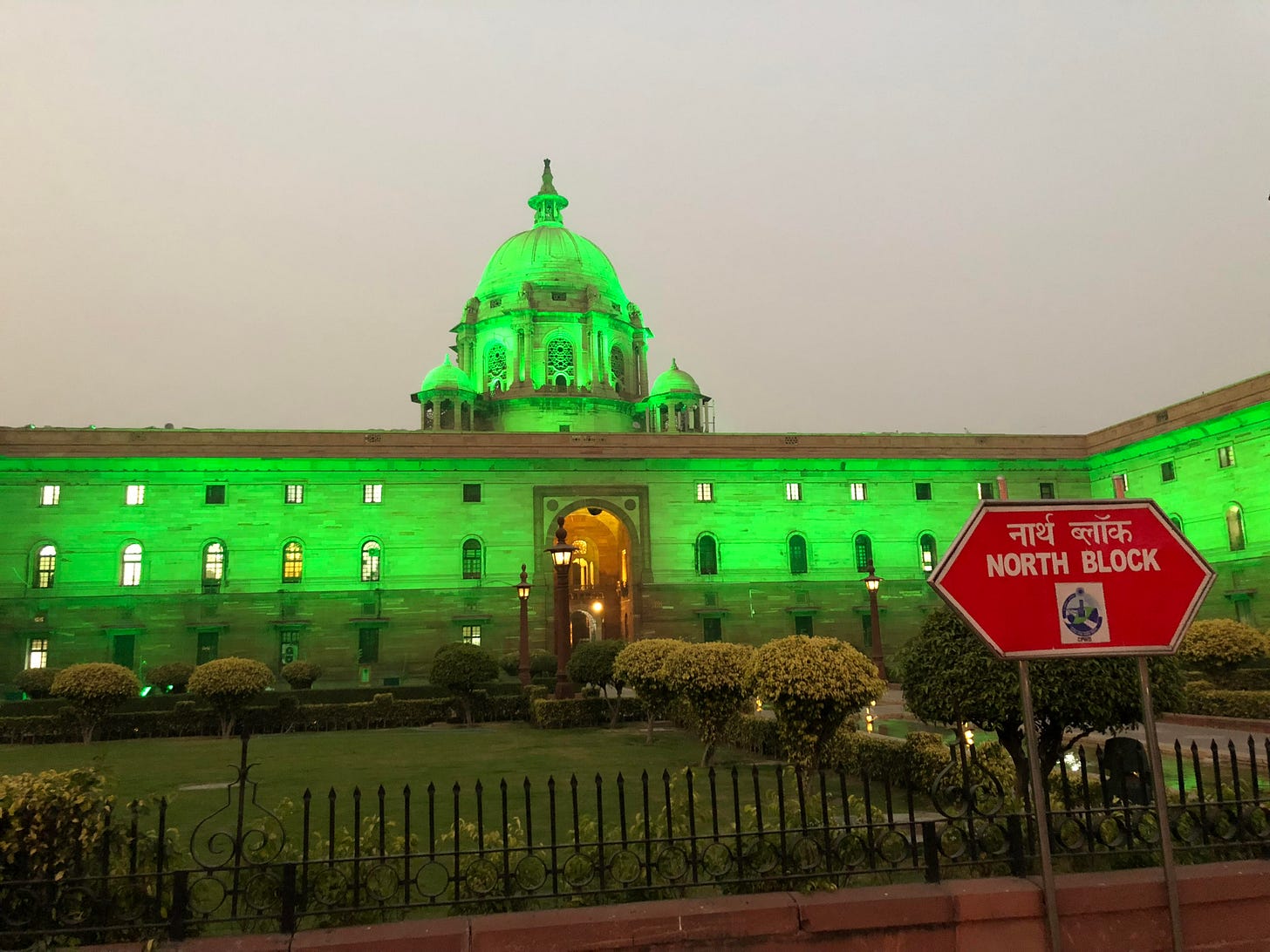RBI Missed an Opportunity to increase the Repo Rate Marginally by 0.25%
"Deliberating on the RBI's Monetary Policy Committee decision, a critical analysis reveals concerns regarding inflation, the weakening rupee, sluggish capital expenditure overlooked."
[KBS Sidhu, ex-IAS] [Independent Analyst, Observer and Commentator] [8th June, 2023]
PRESS NOTE: CRITIQUE OF RBI'S MONETARY POLICY COMMITTEE DECISION
[Chandigarh]: In response to today’s decision made by the Reserve Bank of India's (RBI) Monetary Policy Committee (MPC) to maintain the policy repo rate unchanged at 6.50 percent, we would like to present a critical analysis and evaluation of the Committee's decision as well as our response to their other comments and observations.
"Deliberating on the RBI's Monetary Policy Committee decision, a critical analysis reveals concerns regarding inflation, the weakening rupee, sluggish capital expenditure, sluggish bank deposits growth, unaddressed risks of non-resident deposits, and the silence on the impact of demonetization, necessitating a more proactive and comprehensive approach for sustainable economic growth." KBS Sidhu, ex-IAS.
Inflation Concerns: Despite inflation remaining above the target of 4 percent, hovering around 5.2 percent, the MPC has chosen to adopt a passive approach. This decision raises concerns, especially in the international markets, about the Central Bank's commitment to achieving its inflation target. With inflation persistently above the desired level, it becomes essential for the RBI to take a more proactive stance by implementing a moderate increase in the repo rate. Such a move would help to curb inflationary pressures and provide stability to the economy.
Weakening Rupee: The continuous depreciation of the Indian rupee against the US dollar is a matter of concern, if not worry. A stronger Indian currency is crucial for maintaining stability in the domestic economy and attracting foreign investments, as also making the imports, especially those of capital goods cheaper. By not addressing the issue, the RBI risks further erosion of the rupee's value, which could have adverse effects on import costs, inflation as also the effective price paid by Indian students studying abroad. The MPC should have considered the impact of a weakening rupee and taken effective measures to address the issue.
Sluggish Capital Expenditure: The MPC's decision fails to adequately address the sluggishness in capital expenditure. Robust investment activity is vital for sustained economic growth and job creation. By maintaining a passive stance, the RBI missed an opportunity to provide a boost to the investment sentiment. The Committee should have considered implementing measures to stimulate capital expenditure and encourage businesses to invest in expansion and modernization.
Sluggish Bank Deposits Growth: The lackluster growth in bank deposits is a concerning trend that requires attention. A healthy growth in deposits is essential for supporting lending activities and maintaining overall financial stability. The MPC's decision does not address this issue directly, which may hinder the availability of credit for productive sectors of the economy. The Committee should have explored measures to incentivize savings and promote deposit growth to enhance the availability of funds for lending.
Impact of Non-Resident Deposits: The net inflow in non-resident deposits is stated to have increased to USD 8 billion in FY'23 from USD 3.2 billion in the previous year. However, the MPC's decision does not adequately address the risks associated with these deposits. With the hardening of interest rates in the United States, there is a possibility that these non-resident deposits may either flee or need to be retained with higher interest rates. The Committee should have quantified and hedged these risks, providing clarity on their potential impact on the domestic economy and financial stability.
Demonetization of Rs 2000 Currency Notes: The RBI Committee's silence on the impact of the demonetization of Rs 2000 currency notes is quite intriguing. The qualitative and quantitative impact of demonetization, particularly on inflation, liquidity, and its effect on the common man, should have been addressed. By neglecting to analyze and communicate the consequences of this significant policy move, the MPC missed an opportunity to provide a comprehensive assessment of its impact on the economy.
Our proposal: Given these concerns, we would have proposed a slightly different approach to the MPC's decision. A moderate increase of 0.25 percent in the repo rate would have signaled the RBI's commitment to containing inflation while also addressing the weakening rupee. Such a move would have instilled confidence in the markets, attracting foreign investors and stabilizing the currency. Additionally, the RBI should consider implementing measures to revitalize capital expenditure, such as offering incentives to businesses for investment and easing regulatory hurdles.
In conclusion, the recent decision by the RBI's MPC to maintain the policy repo rate unchanged missed an opportunity to address the prevailing economic challenges adequately. Inflation above the target, a weakening rupee, sluggish capital expenditure, slow bank deposit growth, and unaddressed risks related to non-resident deposits and demonetization demand a more proactive and comprehensive approach. By taking necessary measures to curb inflation, strengthen the currency, promote investment, and provide clarity on key policy decisions, the RBI can effectively navigate the complex economic landscape and foster sustainable growth.
This shouldn’t have been deferred to the August meeting of the MPC.
For further information, please contact: [kbs.sidhu@gmail.com]
Source: RBI Press Note https://rbi.org.in/Scripts/BS_PressReleaseDisplay.aspx?prid=55814






In the Indian context, apart from controlling interest rates through the Reserve Bank of India (RBI), there are several other methods that can be employed to tame inflation. Here are five alternative approaches:
Fiscal Policy Measures: The government can implement fiscal policy measures to curb inflation. This involves controlling government spending, reducing fiscal deficits, and implementing prudent tax policies. By managing expenditures and reducing the fiscal burden, the government can help reduce the overall demand in the economy, thereby curbing inflationary pressures.
Supply-Side Management: Addressing supply-side constraints and improving productivity can help alleviate inflationary pressures. The government can focus on enhancing infrastructure, reducing bureaucratic red tape, promoting competition, and encouraging investment in sectors that are key contributors to inflation, such as agriculture and logistics. These measures can help increase the availability of goods and services, moderating their prices in the market.
Price Controls and Regulation: The government can regulate and control prices for essential commodities and goods that have a significant impact on inflation. Price controls can be implemented through mechanisms such as subsidies, price ceilings, or buffer stock operations. By managing prices, especially for items like food and energy, the government can stabilize inflationary pressures and protect the purchasing power of consumers.
Exchange Rate Management: The RBI can employ exchange rate management techniques to tackle inflation. By intervening in the foreign exchange market and managing the value of the domestic currency, the RBI can influence import costs. A weaker currency can lead to higher import costs, which can contribute to inflation. On the other hand, a stronger currency can help lower import prices, easing inflationary pressures.
Monetary Policy Tools: In addition to controlling interest rates, the RBI has various monetary policy tools at its disposal. These include open market operations, reserve requirements, and liquidity management. By adjusting these tools, the RBI can regulate the money supply and credit availability, influencing inflationary pressures in the economy.
It is important to note that a combination of these measures is often required to effectively tackle inflation. The precise mix of policies depends on the specific economic circumstances and the nature of inflationary pressures prevalent in the Indian economy at any given time. Coordinated efforts between fiscal policy, monetary policy, and structural reforms are crucial for achieving sustainable and stable inflation levels.